

“Absolutely not. In fact, if I could increase it, I would,” said Nestlé Waters North America CEO Tim Brown Wednesday on KPCC, when asked by NASA hydrologist Jay Famiglietti whether he would ever consider moving his water bottling operations out of drought-stricken California, like Starbucks is doing. By Brown’s estimate, Nestlé’s bottling business currently uses 700,000,000 gallons of California groundwater a year.
Nestlé isn’t the only company draining California’s aquifers and shipping the water out of state in the middle of a megadrought. In fact, as I reported here this week, the Crystal Geyser Water Company is getting ready to open up a brand new operation in Mount Shasta, at the headwaters of the Sacramento River. And, just down the road from the Crystal Geyser site, plans are being drawn up to build yet another, “boutique”
» Read more about: 700 Million Gallons of California Groundwater Isn't Enough for Nestlé »


To sign up for Leighton Woodhouse’s email newsletter on the drought, go to Land of Thirst.
Nine years ago, Raven Stevens moved to Mount Shasta, California, after being priced out of the housing market in Santa Cruz, where she had lived for 27 years. She describes the picturesque mountain town just south of the Oregon border as a community “in transition.” By that she means two things: it is an economy moving from logging to more sustainable industries, such as tourism. And it is a community being overtaken by transplants from the Bay Area, like herself.
“We bring our crazy ideas with us,” she says. “And we get a hard time for that. We’ll never be locals. I’ve heard some people say, ‘You people should just go back to where you came from.’”
The house Stevens and her partner purchased in Mount Shasta is about two thousand feet south of an old water bottling plant that was vacated in 2010 by Coca-Cola/Danone.
» Read more about: Life in Time of Drought: Will Mount Shasta Bottle Its Water for Profit? »
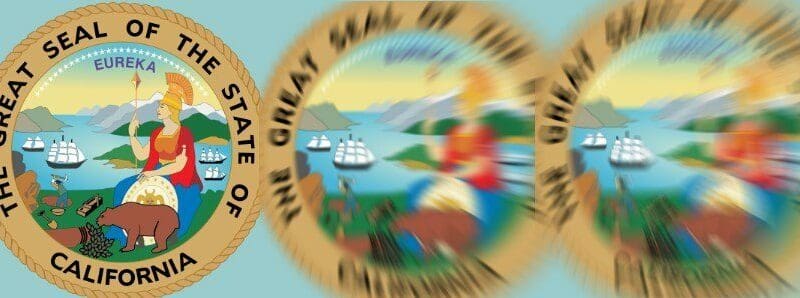

(Editor’s Note: This is an encore posting from our State of Inequality series.)
March 1, 2060
Dear Granddaughter,
Just the other day, you asked me two questions that I failed to answer. How did California get into the fix it’s in today? And, a half century ago, when I was writing regularly about our home state, did anyone see this future coming?
I must confess the real reason for my evasion was that your questions reminded me of a document from those days that I couldn’t immediately put my hands on. It took me a week but I finally found it on a very old laptop computer I still hang onto. (I know, I know, I’m a dinosaur!)
This artifact is dated 2010, and it’s a map of sorts — not of a city but of a future.
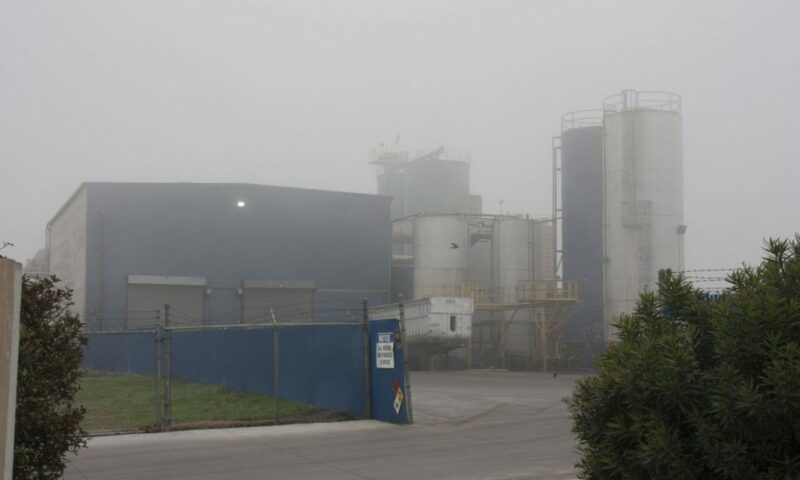
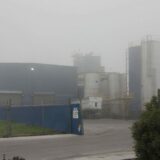
One day late last year, retired police officer Robert Mitchell took several visitors on a tour of the West Fresno community where he has lived for decades. But it was hardly a nostalgia excursion.
This is an encore posting from our State of Inequality series
First, there was a stop at Hyde Park, a former dump. There was another at a sports complex and fishing pond built on a Superfund cleanup site. And still another at a controversial meat-rendering plant operated by Darling Ingredients Inc. that residents say has spewed foul smells into nearby residential areas for more than half a century.
“You constantly had the horrific odor of the processing that occurs here at Darling,” said Mitchell, a thoughtful man with a bushy white beard and deep voice. He and his visitors stood outside the Darling plant,
» Read more about: Hell’s ZIP Code: Clearing the Air in West Fresno »
…
California is in the midst of what is arguably the worst drought in its recorded history.
Powered by Cincopa Video Hosting for Business solution.California’s Megadrought in the Central ValleyPictures of land and people in California’s Central Valley impacted by the state’s historic drought.Dead orchards are bulldozed and woodchipped to make into compost.flash 16cameramake Canonheight 600orientation 1camerasoftware Adobe Photoshop CC 2originaldate 10/28/2014 5:34:26 PMwidth 900cameramodel Canon EOS 5D Mark IICitrus grower Bryan Hixson alongside the Friant-Kern Canalflash 16cameramake Canonheight 600orientation 1camerasoftware Adobe Photoshop CC 2originaldate 10/28/2014 12:23:12 AMwidth 900cameramodel Canon EOS 5D Mark IIAlmond husks. Almonds are highly water-intensive, but growers are holding onto their almond fields and even switching over to the crop because it yields among the highest profit margins.flash 16cameramake Canonheight 600orientation 1camerasoftware Adobe Photoshop CC 2originaldate 10/28/2014 7:10:32 PMwidth 900cameramodel Canon EOS 5D Mark IIBoth the high-speed rail and the effort to restore the San Joaquin salmon run are political third rails in the Central Valley.flash 16cameramake Canonheight 600orientation 1camerasoftware Adobe Photoshop CC 2originaldate 11/6/2014 12:00:38 AMwidth 900cameramodel Canon EOS 5D Mark IICitrus grower Gus Carranza in his fieldsflash 16cameramake Canonheight 600orientation 1camerasoftware Adobe Photoshop CC 2originaldate 10/27/2014 8:13:52 PMwidth 900cameramodel Canon EOS 5D Mark IICalifornia’s Proposition 1 was an emergency measure to mitigate the drought situation,


What do Facebook, Kaiser Permanente, Staples and the San Francisco Department of Environment have in common? All four appear on a list of corporate and government entities that pledged to stop purchasing furniture treated with flame-retardant chemicals. The Center for Environmental Health (CEH), the organization behind the pledge, hopes to steer business away from furniture containing flame retardants, which have been linked to a range of health risks. All the offices on the list spend a combined $520 million on furniture every year.
The pledge coincides with new state legislation that will require manufacturers to attach labels to furniture treated with flame retardants. In September Governor Jerry Brown signed Senate Bill 1019, which takes effect January 1, 2015.
Treating furniture with flame-retardant chemicals used to be standard procedure for meeting California’s furniture flammability code, known as Technical Bulletin 117.
“For a long time government regulations were promoting the use of these chemicals,” Charles Margulis of CEH tells Capital &
» Read more about: Offices Pledge They’ll Buy Chemical-Free Furniture »
Steve Clemons is Washington editor-at-large for The Atlantic, whose spin-off site, CityLab, covers new ideas and issues facing urban metro areas worldwide. Each year CityLab convenes a gathering of global city leaders in person to discuss innovative ideas and projects that are emerging in urban communities. This year CityLab’s conference was held at the Ace Hotel in downtown Los Angeles. Shortly afterward, Capital & Main spoke to Clemons. In this video clip he speaks of L.A.’s past and its new allure.
Also Watch: Steve Clemons on Government
» Read more about: Steve Clemons on L.A.’s Hard Times and Unbelievably Cool Hybrid Stuff »


From boiling the soon-to-be-mashed potatoes to rinsing the fruits and vegetables, clean water is an essential ingredient in every household that will be preparing Thanksgiving dinner.
And yet, the absence of adequate federal support means our public water systems are under threat. Over the next 20 years, U.S. water systems will likely require a staggering $2.8 to $4.8 trillion investment, and for-profit corporations such as Veolia and Suez are jumping at the opportunity to privatize America’s water supply so they can pocket a portion of those trillions we’ll need to spend.
A new report released by Corporate Accountability International with Public Services International Research Unit (PSIRU), shows that promises made by private water corporations fail to materialize or come at the expense of deferred infrastructure maintenance, skyrocketing water rates and risks to public health.
The good news, however, is that cities across the country and all over the world are increasingly rejecting water privatization and are taking back public control of their water systems.
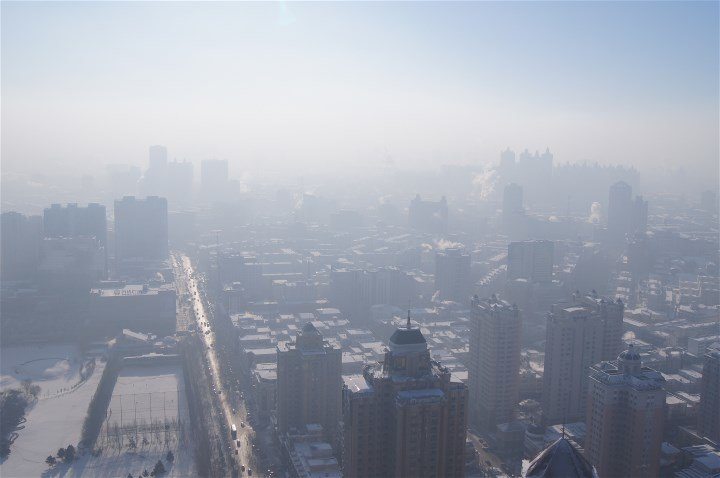

This month the U.S. and China reached an historic and unexpected agreement on climate change. As a follow-up, China announced that it will cap its coal consumption by 2020. The U.S. and China are the largest emitters of greenhouse gases in the world, and the world’s largest economies. What does this mean for us?
Climate change isn’t something that we can wait 50 or 100 years to deal with – it is happening right now. The U.S. is seeing more severe weather, unprecedented sea level rise, loss of habitat and expanding ranges of pests and diseases.
The primary driver of climate change is the carbon that humans put into the atmosphere and the biggest producers of carbon are coal-fired power plants that generate electricity. China is now the world’s largest user of coal.
In the climate change agreement, China promised to reach its peak emission of carbon and other greenhouse gases,
» Read more about: U.S., China Clear the Air With Historic Agreement »

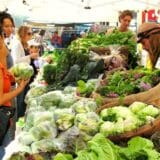
Thanksgiving is our national food-focused holiday–but Los Angeles has an all-year-round reputation for food obsessions: Paleo diets. Veganism. Juicing. Fasting. Fusion food trucks, kimchi pizza, chorizo-filled potstickers with duck sauce reduction (yes, that is a real recipe).
What gets a lot less foodie press, though, is the City of Los Angeles’s innovation in creating one of the most progressive food policies in the nation.
Cities around the country have established programs to improve the availability of nutritious food for residents and set ethical and environmental standards for the suppliers to the multitude of public institutions that feed millions every year. In 2012 the city established the L.A. Food Policy Council to develop an equitable food policy for Los Angeles and to answer some key questions: How does a city that buys tons of food every year define “locally grown” food? How do purchasing policies sustain small farmers?
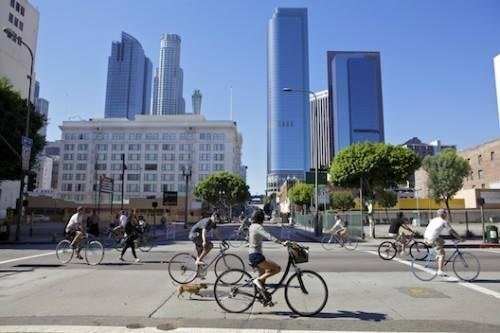

Have you ever felt paralyzed by the apocalyptic projections of global warming? Have you walked away from a presentation, article or news report feeling despair about the heating of our planet? You’re not alone. Amongst young Americans polled, global warming is a major worry.
The fear is good and warranted; the despair and paralysis are not. According to Jonathan Parfrey of the L.A.-based nonprofit, Climate Resolve, climate change needs to be seen as a local issue that people can address and do something about. And he has many ideas about how that can be done.
“L.A. has a spectacular climate,” says Parfrey, “we all love it. That’s why we’re here.” But global warming can hurt our city by impacting the things we care most about — including our health, food and water supply, property values, air quality and fire safety.
What’s called the “urban heat island effect” —
If you’re looking for a real fright this Halloween season, there’s no need to find a haunted house or to visit the coffin in your neighbor’s yard. Just take a look at the independent film Plastic Paradise, The Great Pacific Garbage Patch. I saw the film recently with about 200 mostly high school and college students in Santa Monica High School’s Barnum Hall.
It’s hard to know where to start with the grossness of the plastic mass circulating in the world’s ocean gyres (the five swirling oblong currents in the furthest-most reaches of the planet’s oceans). On the Midway Atoll, one of a string of volcanic islands halfway between the U.S. and Japan, tons of old flip-flops, bottles, pacifiers, toys, sippy cups, bottle tops, garbage bags, laundry baskets and every other item of non-destructible plastic origin you can think of, washes up on the formerly pristine,
» Read more about: Film Review: Plastic Paradise, The Great Pacific Garbage Patch »
At some point during the last decade, as various plans have been floated to avert climate change, it struck me that we’re focusing on the wrong problem. Global warming caused by a buildup of greenhouse gases in the atmosphere (carbon dioxide chief among them), has indeed sped us in the direction of rendering the planet uninhabitable for life, human and otherwise. But climate change is not a disease in itself. Instead, it’s a symptom of a disease, systemic and pernicious, brought on by squandering the parts of nature we call “resources” at a breathtaking clip and without restraint. All of the solutions on offer, from displacing coal with natural gas in the West to constructing more nuclear reactors in the South, are supposed to allow us to go living exactly as we do, without the consequences.
Except we can’t. As Naomi Klein, author of No Logo and the blockbuster bestseller, The Shock Doctrine,
» Read more about: Reviewed: Naomi Klein’s “This Changes Everything” »
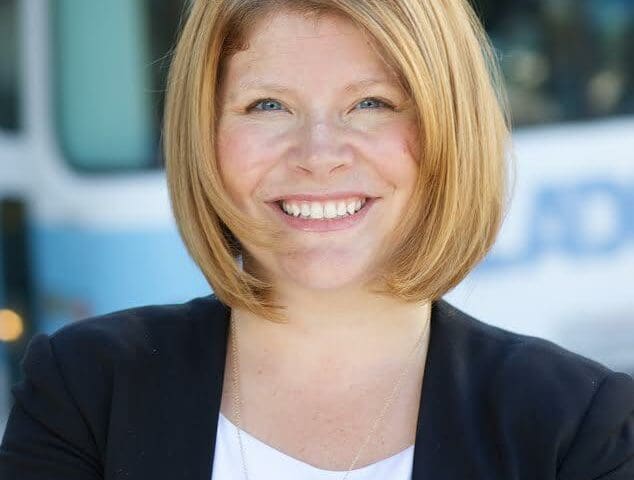

Seleta Reynolds, Los Angeles’ new chief of transportation, wants to help break L.A.’s dependence on cars. She believes that bikes are key to doing it. New York City, the Bay Area and other metropolises have already begun to show that a mixed transportation network with a central role for bicycles can be achieved in America. But can bikes prosper in the most infamous car town in the world?
Before being hired by Mayor Eric Garcetti this summer, Reynolds helped lead San Francisco’s Livable Streets office in that city’s transportation agency. She sees a bit of L.A.’s future in San Francisco’s present.
“In San Francisco, people are truly multimodal,” she told Capital & Main. “They take taxis, they take Uber and Lyft. They ride their bikes, they take a bike-share. They take the ferry, they ride the bus, they take the Muni Metro. Sometimes they drive, they take car-shares.
» Read more about: A Bike Lane Runs Through It: L.A. Rethinks Transportation »
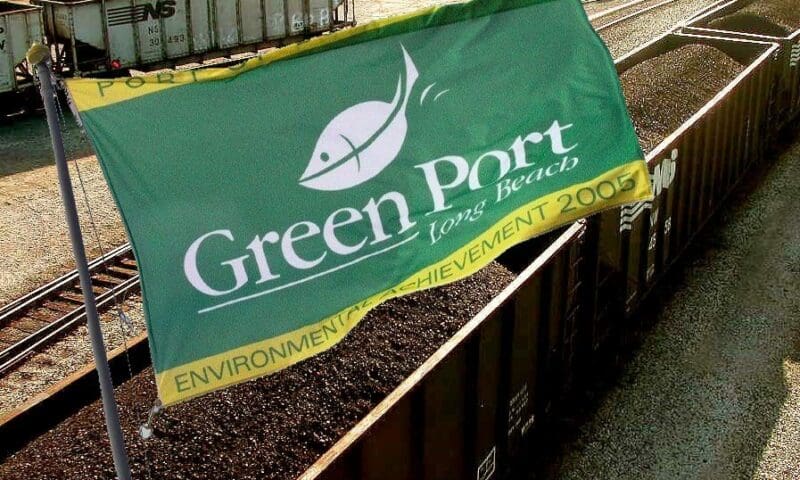
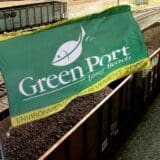
To the five members of the Long Beach Harbor Commission, the decision to renew an old lease for a coal-export terminal was an easy one. Metropolitan Stevedore has operated a dry-bulk terminal at the Port of Long Beach since 1962, from which it moves everything from soda ash to coal to petroleum coke (“petcoke”), a carbon-intensive refinery byproduct. Oxbow Carbon and Minerals, run by William Koch, brother to Charles and David, has long subleased a coal shed from Metro, where it stores petcoke and coal for export. Under the new contracts, Metro will continue its lease for the next 20 years, and Oxbow will now lease directly from the Port for 15. Beyond that, not much has changed.
“The amount of coal exported is going to be roughly the same,” says Port spokesman Art Wong. “The facility’s going to operate as it always has.” For the Port,
» Read more about: Coal Is Still King at the Port of Long Beach »
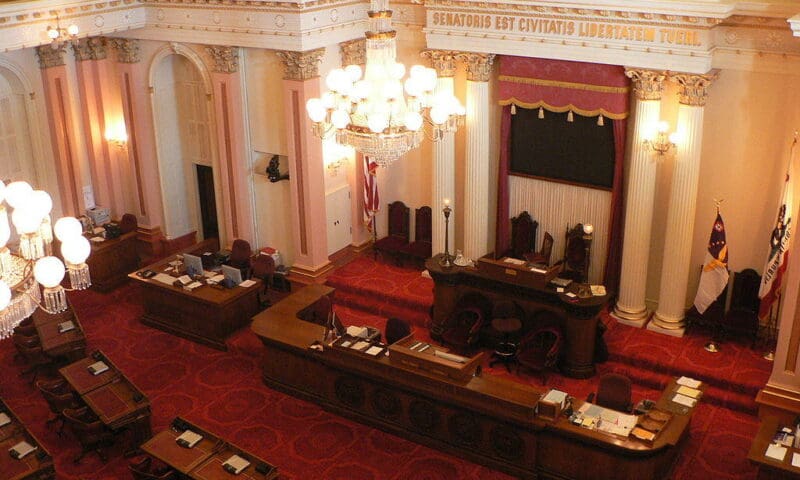

In a victory for public safety over private profitability, Senate Bill 1019 passed the state Assembly and Senate with strong bipartisan consent on August 27 and 28. Known as the Consumers’ Right to Know: Flame Retardants in Furniture bill, the measure – introduced by Senator Mark Leno, (D-San Francisco) — requires upholstered furniture manufacturers to disclose to consumers the use or absence of flame retardant chemicals on furniture labels.
“SB 1019 gives consumers what they have demanded for decades—the right to know what is in their furniture and the power to make an informed decision about whether to purchase it,” Leno said in a press statement.
Given SB 1019’s diverse support—from business associations to consumer groups, environmental organizations and labor unions—it appears likely Governor Brown will sign the bill by the September 30 legislative deadline, after which it would take effect January 1, 2015.
Getting business on board with SB 1019 proved to be a critical turning point for the bill.
» Read more about: Public Safety, Worker Protection Bills Advance to Governor’s Desk »


Last night the California plastic bag measure, state Senate Bill 270, fell four votes short of the required 41 to pass the Assembly. The bill’s support crossed partisan lines – however, several Democratic legislators from the Central Valley and Southern California voted no or did not vote at all. The San Jose Mercury News reported that out-of-state lobbyists representing Hilex Poly, an East Coast plastic bag company, spent nearly half a million dollars to sway legislators to oppose SB 270.
How did your state representative vote? See the voting screen, above.
SB 270, sponsored by senators Alex Padilla, Kevin De Leon and Ricardo Lara, would restrict single-use plastic bags in California, a proven policy measure to limit ocean litter. A similar ban has been implemented in more than 100 communities across California – and in such large cities as Los Angeles, San Francisco and San Jose. The effect has been reduced litter – with no jobs reported lost.
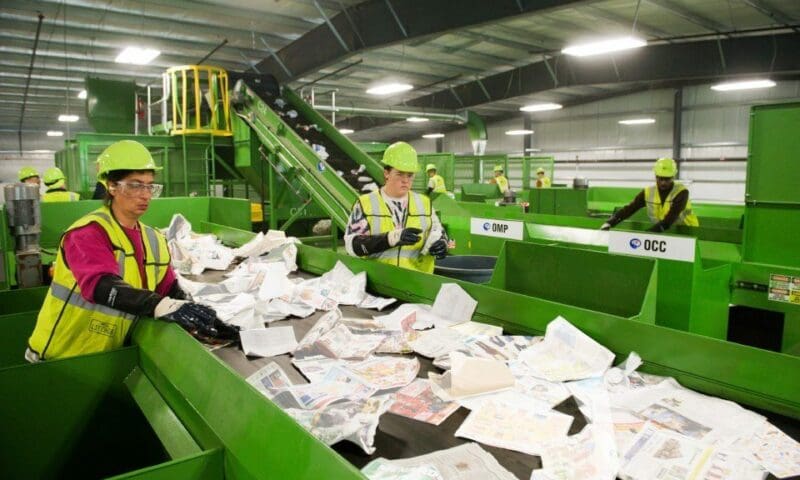
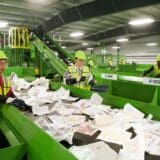
Imagine being a waste worker sorting through trash for recyclables with only tattered gardening gloves and being pricked by a used hypodermic needle. Under the current conditions of many recycling companies, you would be told, “Get back to work” and simply have to bandage your wound – sometimes with pieces of paper from a pile of trash. And if you tried to talk with your boss about your fear of spreading illness from the needle to your family or friends, you are immediately fired. This is a true story of a former trash sorter – who was also considered a temporary employee – at a trash sorting facility in Los Angeles.
This story – of gross negligence and denial of company responsibility for basic worker health and safety protections – is too common a reality in low-wage industries. Bill Raden and Gary Cohn covered the plight of temporary workers in the food processing industry in a Capital &
» Read more about: New California Bill Will Dispose of Abuse of Temp Sanitation Workers »

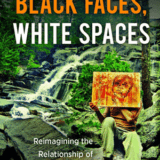
Talk about a big tent: Carolyn Finney’s new book looks at some important but unexplored terrain in our national parks and conservation movements – the relative absence of African Americans. Black Faces, White Spaces: Reimagining the Relationship of African Americans draws upon the legacy of slavery, Jim Crow laws, pop culture and the environmental justice movement to pose some provocative questions about the racialization of nature.
Was it a coincidence that Congress passed the Wilderness Act in 1964 – the same year as the signing of the Civil Rights Act? Why have environmental groups such as the Sierra Club and Audubon Society remained overwhelmingly white in their memberships? How are African Americans changing the dynamics of environmental preservation?
Finney, an assistant professor with U.C. Berkeley’s Environmental Science Department, will discuss her book and its findings on Tuesday, July 22, 7 p.m., at a signing at Eso Won Books,
» Read more about: Carolyn Finney Discusses ‘Black Faces, White Spaces’ »

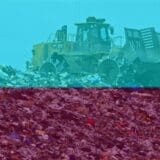
Imagine walking outside and breathing fresh air instead of today’s exhaust. Imagine taking your lunch scraps to a compost bin while a modern trash truck makes its way down your street. And then imagine the convenience of tossing your recyclables into a blue bin, and knowing that this has lowered your trash bill while helping the environment.
Los Angeles is on track to becoming a national environmental leader with its landmark Zero Waste LA system, which covers waste and recycling collection for apartments and businesses. In April, the Zero Waste LA policy was adopted by Los Angeles’ City Council. The system will carve out 11 exclusive waste franchise zones that will reduce truck traffic and increase recycling and composting – with three of the zones designed to incubate small waste haulers’ growing businesses and protecting long-term competition.
The next step — the Request for Proposals, or RFP — was just approved by the Board of Public Works on June 11,